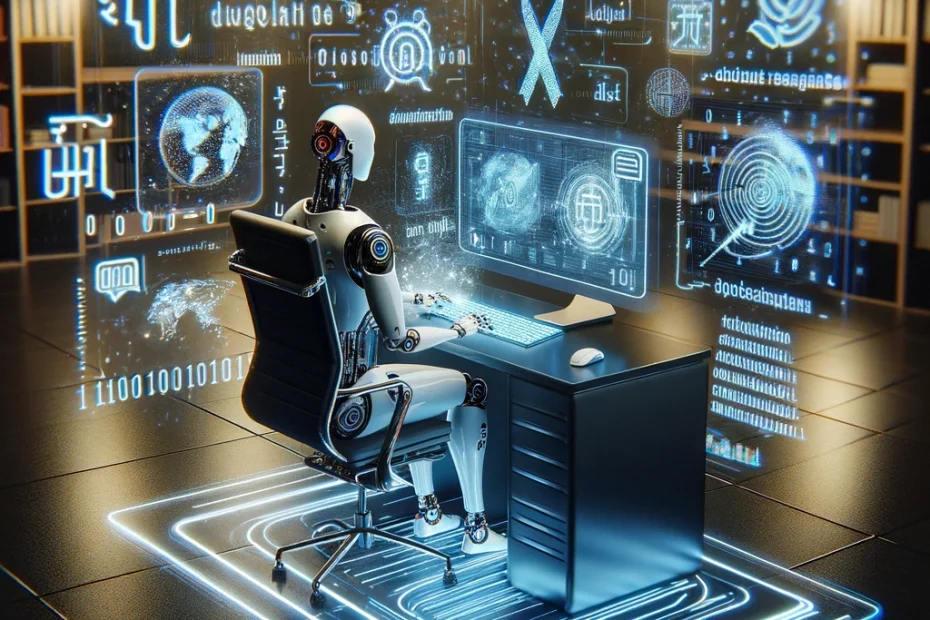The landscape of language translation is undergoing a profound transformation, thanks to the advancements in Artificial Intelligence (AI). The era of solely relying on human translators for bridging language barriers is gradually shifting as AI-driven technologies emerge at the forefront. This evolution is not just about replacing human effort but enhancing and expanding the horizons of what’s possible in the realm of translation. AI is reshaping the game by introducing speed, accuracy, and efficiency levels previously unattainable, opening new avenues for communication in a globalized world.
The Advent of AI in Translation
The journey of translation has seen remarkable milestones, from manual script translations to the digital revolution and now, the AI wave. AI has introduced machine learning algorithms and neural networks that mimic human neural activities, enabling machines to understand, interpret, and translate languages with astonishing precision.
Breaking Language Barriers with Neural Machine Translation
Neural Machine Translation (NMT) is at the heart of this revolution. Unlike its predecessors, NMT leverages deep learning to understand context, idiomatic expressions, and even cultural nuances. This technology has significantly narrowed the quality gap between human and machine translations, making it a viable tool for both casual conversations and professional settings.
Real-time Translation: Bridging Conversations Instantly
One of the most exciting advancements is real-time translation. Devices and apps can now provide instant translation for speech and text, enabling seamless conversations between people speaking different languages. This breakthrough is not just facilitating tourism and social interactions but also breaking down communication barriers in international business and diplomacy.
Enhancing Human Translation Efforts
Despite fears of AI replacing human translators, the reality is more symbiotic. AI tools are becoming assistants rather than replacements. They handle tedious, repetitive tasks, allowing human translators to focus on complex, nuanced aspects of language that machines still struggle with. This collaboration is elevating the quality of translations and the efficiency of the translation process.
The Role of AI in Localization
Localization goes beyond mere translation; it’s about adapting content culturally and contextually to different markets. AI is playing a pivotal role in automating and refining localization processes, ensuring that products, services, and content resonate with local audiences worldwide.
Challenges and Ethical Considerations
However, the integration of AI in translation is not without its challenges. Issues of data privacy, copyright, and the potential loss of jobs in the translation industry are hot topics. Moreover, there’s an ongoing debate about the ethical use of AI in preserving languages and dialects without contributing to cultural homogenization.
Looking Ahead: The Future of AI-driven Translation
The future holds immense promise for AI in translation. With advancements in AI and machine learning, we can anticipate even more accurate, context-aware translations. The potential for AI to learn from and adapt to individual language use patterns could personalize translations, making them more relevant and accurate than ever before.
Innovations on the Horizon
Emerging technologies like augmented reality (AR) and virtual reality (VR) are set to collaborate with AI translation, offering immersive language learning and translation experiences. Imagine AR glasses that translate text in real time as you read or VR environments where you can interact with avatars speaking different languages, translated instantly and accurately.
The Impact on Global Communication
The implications for global communication and connectivity are profound. AI-driven translation can democratize information access, education, and opportunities, making them available across linguistic divides. It heralds a new era of inclusivity, where language is no longer a barrier but a bridge connecting diverse cultures and communities.
Conclusion
The transformation of translation by AI is a testament to human ingenuity and the endless possibilities of technology. As we navigate this new landscape, the synergy between human and machine translation promises to make the world more connected, understood, and inclusive. The future of translation, powered by AI, is not just about changing the game; it’s about expanding the field, where everyone, regardless of language, has a chance to play.
Frequently Asked Questions
- How accurate is AI in translation compared to human translators? AI has made significant strides in accuracy, especially with languages that have large datasets available. However, for nuanced, cultural, or highly specialized texts, human translators still hold the edge.
- Can AI translation help in learning new languages? Yes, AI-powered tools and apps are excellent resources for language learners, offering instant translations, pronunciation guides, and personalized learning experiences.
- Will AI translation eliminate the need for human translators? Not entirely. While AI can handle many translation tasks, the need for human oversight, especially for nuanced, literary, or specialized texts, remains critical.
- How does AI understand cultural nuances in translation? AI translations are becoming more sophisticated with neural machine translation, which can learn from vast amounts of data, including cultural nuances, though it’s still an area where human input is invaluable.
- What are the ethical considerations of using AI in translation? Ethical considerations include data privacy, the potential for bias in AI algorithms, copyright issues, and the impact on employment in the translation industry.
- How can AI improve real-time translation for live conversations? Advancements in speech recognition and processing speed are making real-time conversation translation more accurate and fluid, reducing lag and misunderstandings.
